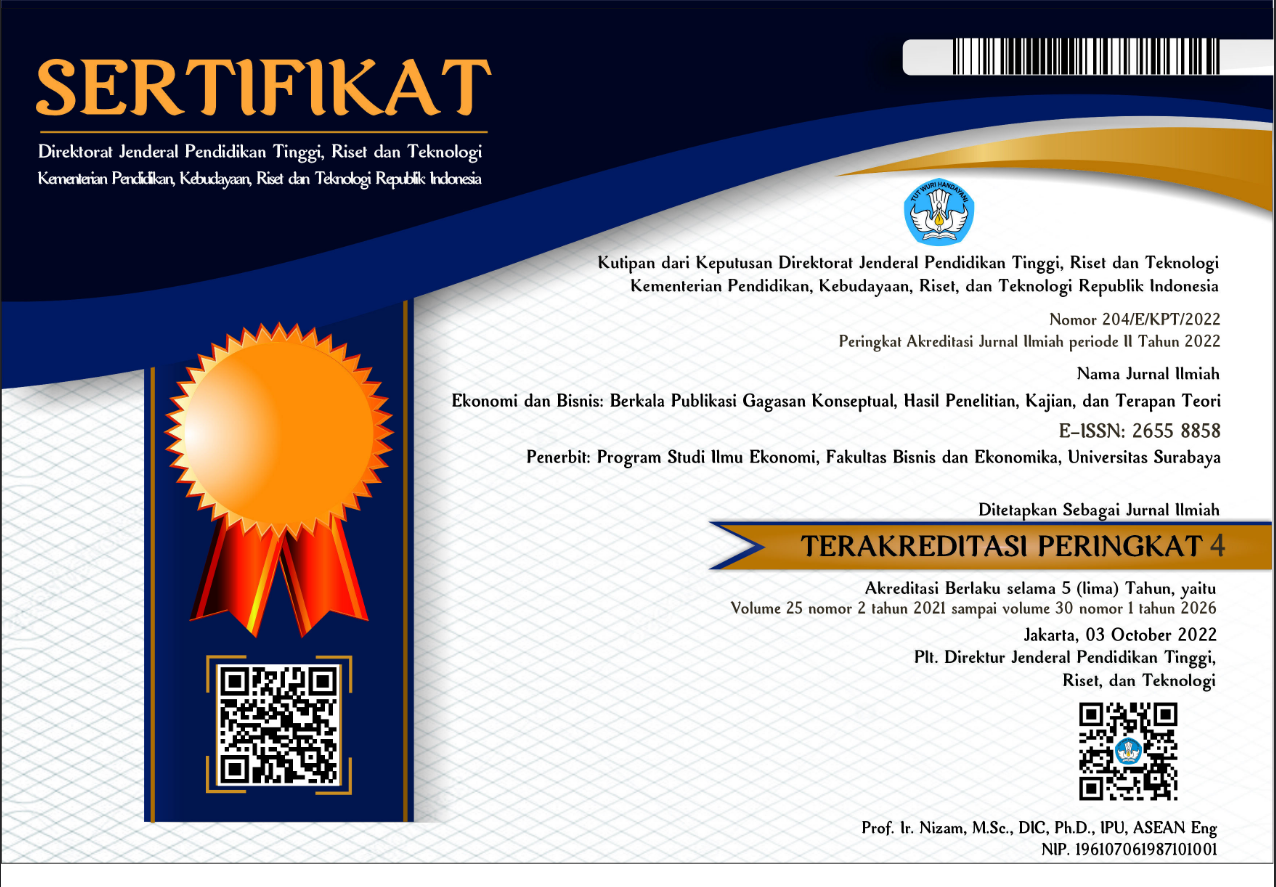UPAYA PENINGKATAN EKSPOR NON MIGAS JAWA TIMUR PERIODE 2010-2011
 Abstract Views:
342 times
Abstract Views:
342 times
 PDF Downloads:
229 times
PDF Downloads:
229 times
Abstract
This study aims to determine the measures that can be done to increase non-oil exports of East Java 2010-2011 period, either through the creation of a variety of export products and expand export destinations, particularly to the Middle East and Africa. Some non-oil export commodities is a mainstay of East Java is copper, organic chemicals, paper / carbon, plywood, shrimp, textiles, footwear, coffee, paper, and tobacco. Non-oil export development strategy of East Java is based on the SWOT analysis, which is preparing strengths, weaknesses, opportunities, and threats. The existence of the Tanjung Perak Surabaya and Sidoarjo Juanda Airport is the main force to boost exports, as well as the export share has exceeded 200 export destinations with 3000 items. Further basic weaknesses which are not memilii ISO and eco labeling, as well as the human resources that are less qualifid. Non-oil exports to the East Java there are still considerable opportunities for increased, including exhibitions abroad funded the Central Government and the Provincial Government of East Java, including education and training activities and free export periodically organized by the Department of Industry and Trade East Java Province. Threats faced by exporters in East Java is the competition in the international market is getting tougher and other rules are getting heavier. Based on the SWOT analysis, the strategy can be used to improve the non-oil export in East Java is to optimize the market potential that exists in other provinces, such as the province of South Kalimantan, East Kalimantan, South Sulawesi, East Nusa Tenggara, West Nusa Tenggara, and South Sumatra. Furthermore, actively pursue international exhibitions, both in Jakarta, as well as other countries. Another strategy is to create efficienc, effectiveness, and productivity in the production process in order to compete in the international market.
Downloads
References
Kuncoro, Mudrajad, 2012, “Kebijakan Perdagangan”, Kompas, 17 Oktober 2012.
Las, 2013, “DefisitTak Terbendung”, Kompas, 2 April 2013.
Lindert, Peter H., dan Kindleberger, Charles P, alih bahasa Abdullah, Burhanudin, 1990, Ekonomi Internasional, Edisi ke-8, Erlangga, Surabaya.
Prihtiyani, Eny, 2012, “Amankan Ekspor-Impor”, Kompas, 5 Juni 2012.
Sof, 2012, “Bahaya jika Abaikan Pasar Ekspor Utama”, Jawa Pos, 24 Mei 2012.
Veritas, Dei, 2010, ACFTA, Tantangan Ekonomi Indonesia, Reformed Centre for Religion and Society (RCRS), Jakarta.
http://www.jatim-ekonomi-prospek.com/artikel/potensi-dan-tantangan-kerja-jawa-timur.html diakses pada 1 Juli 2013
http://www.jatim-ekonomi-prospek.com/artikel/ketenagakerjaan-jawa-timur-dan-peluang-penciptaan-lapangan-kerja.html diakses pada 1 Juli 2013
http://bappeda.jatimprov.go.id/2011/04/24/acfta-berlanjut-ekonomi-makin-bangkrut/ diakses pada 1 Juli 2013
http://sirwanyazidbustami.wordpress.com/2012/10/27/acfta-peluang-atau-ancaman/ diakses pada 1 Juli 2013
http://bunda-bisa.blogspot.com/2013/03/kebijakan-proteksi-dalam-perdagangan.html diakses pada 1 Juli 2013

 DOI:
DOI:















